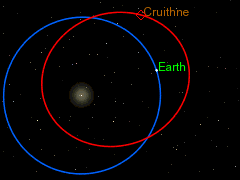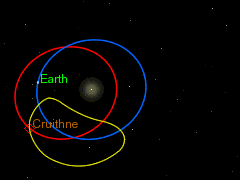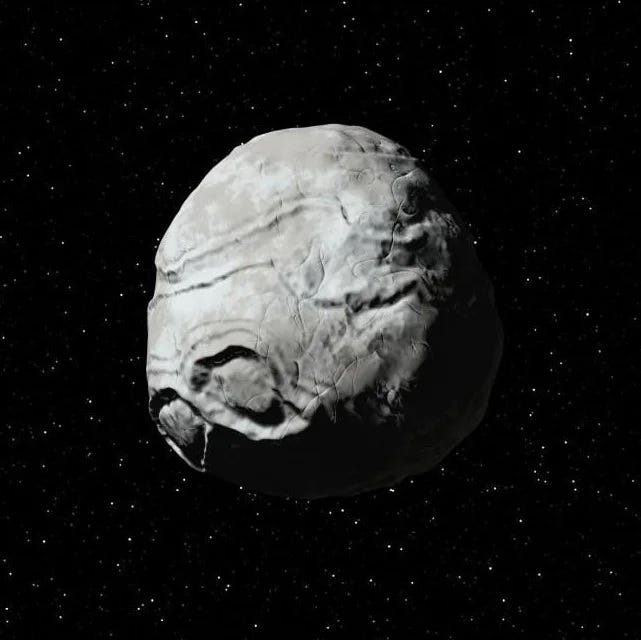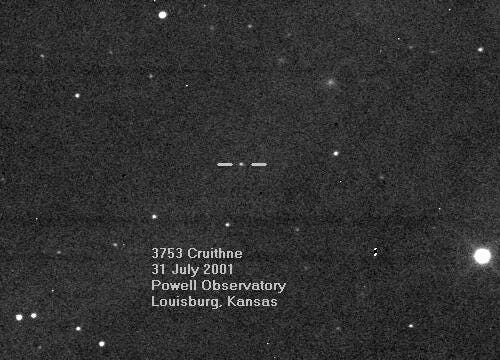Exploring Earth's Relationship with Cruithne: The Myth of a Second Moon
Written on
Understanding the Question: Does Earth Have Another Natural Satellite?
This is a common inquiry I receive from individuals who may not be well-versed in space sciences. My straightforward response is that, in fact, Earth does not possess any additional natural satellites. This often leads to reactions of disbelief, particularly when someone mentions Cruithne, as if to say, “Aha! Caught you off guard, scientist!”
I felt compelled to compose this article to clarify once and for all the status of Cruithne.
What Exactly is Cruithne?
Cruithne is a small asteroid, approximately 5 kilometers in diameter, that shares a 1:1 orbital resonance with Earth. Unlike a satellite, Cruithne orbits the Sun. Its closest approach to Earth occurs at a distance of around 12 million kilometers (which is 31 times farther than the Moon), and at its furthest point, it may be located on the opposite side of the Sun.
Why Do Some People Mislabel It as a Satellite?
The reason behind this misconception lies in the fact that Cruithne's orbital period around the Sun is nearly identical to that of Earth, lasting about 364 days. Consequently, from an external viewpoint, it seems as though Cruithne trails Earth during their mutual revolution around the Sun.

The orbital patterns of Earth and Cruithne resemble a unique dance.
Why Isn’t Cruithne Considered an Earth Satellite?
Cruithne exists far beyond Earth’s Hill sphere, which is the gravitational zone a planet can control to maintain a satellite. Its proximity to Earth is merely coincidental; while Earth’s gravitational influence does affect Cruithne, it does not govern its orbit. To an observer on Earth, Cruithne appears to follow a horseshoe or bean-shaped path.

In the field of astronomy, a satellite is defined as a celestial body that orbits a central entity, held in place by its gravity, with the center of rotation located within the primary body. By this definition, Earth orbits the Sun, and the Moon orbits Earth. However, Cruithne does not orbit our planet! In fact, at various points in its orbit, it can actually come closer to other celestial bodies, such as Mars and Venus, and occasionally even Mercury.
What Does Cruithne Look Like?
Some pseudoscientific sources have circulated images claiming to depict Cruithne.

While I refrain from critiquing the contents of this image, it is crucial to note that no spacecraft has approached Cruithne closely enough to capture a photo of such clarity. At best, this image is an artist's interpretation; at worst, it may be entirely fictitious.

As far as I am aware, this is the only genuine photograph of Cruithne, where it appears as a small speck amid the stars.
Stay Informed
If you're interested in more articles about space, feel free to clap to show your support! Subscribe to our channel and submit your questions, which I will address in future articles.
Chapter 2: The Misconceptions Around Cruithne
Earth's Other Moons - YouTube: This video delves into the fascinating topic of Earth's supposed secondary moons, including Cruithne, and clarifies the misconceptions surrounding them.
Does Earth Have A Second Moon? - YouTube: This informative video explores whether Earth has another natural satellite, shedding light on asteroids like Cruithne and their actual orbital dynamics.